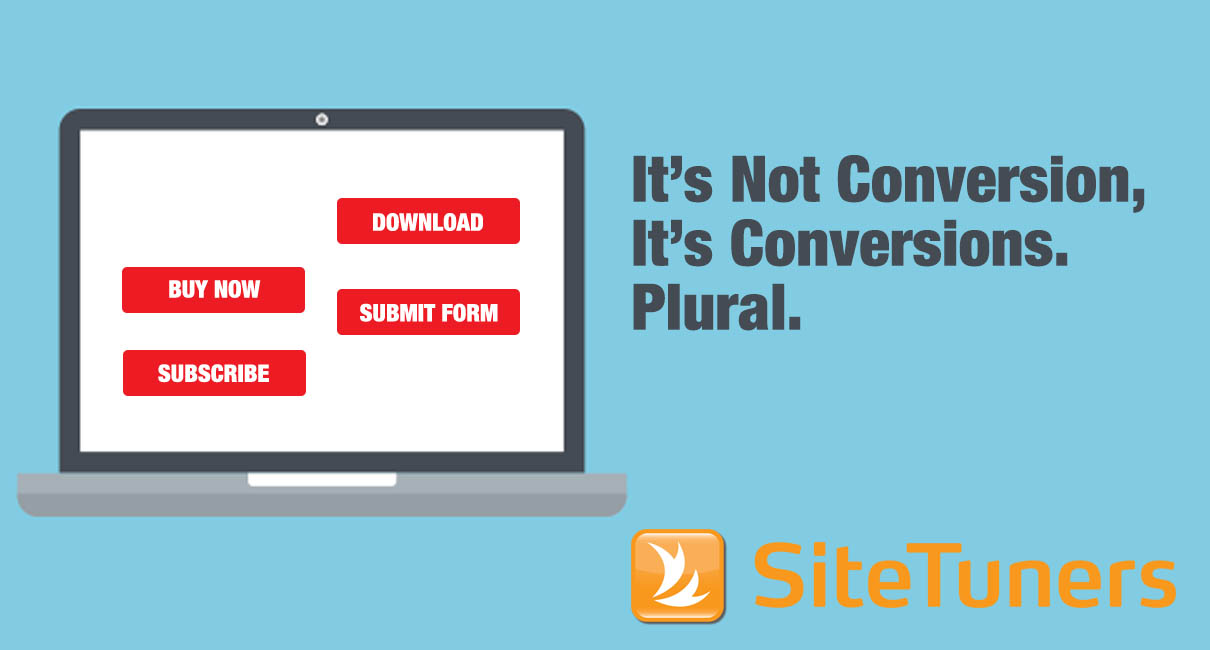 In the second of our 12 days of LPO tips, SiteTuners takes you through the different types of conversions, and helps you win not just the sale, but the relationship with customers.
In the second of our 12 days of LPO tips, SiteTuners takes you through the different types of conversions, and helps you win not just the sale, but the relationship with customers.
Determining what purpose your landing page serves sounds simple enough, especially if it is specific to a keyword campaign or a set of display ads. For many in digital marketing, though, just working with stand-alone landing pages is not an option – you have to know the strengths and weaknesses of the three main types, including the notoriously difficult to balance home page.
Your Three Landing Pages

Stand-alone LP
Single products or services are ideal for stand-alone landing pages. Many products have been successfully sold via the online equivalent of a long direct-mail sales letter.
Microsite LP
Microsites work well because they are separate from the main corporate site and focus exclusively on the needs of the visitors, who care only about their immediate goal. They create more intimacy and a feeling of belonging, while still providing important supporting information.
Main site LP
By definition your main site must serve many audiences, so it is likely to be somewhat generic and cluttered.
 Clear Distinctions
Clear Distinctions
Just as each type of landing page serves a unique purpose, each needs to be treated with different usability lenses, funnels, Key Performance Indicators, and analysis.
One of the worst mistakes marketers make is just measuring for conversions to direct sales and revenue for the corporate home page. Those micro-conversions are fine for a targeted, stand-alone page, or even a microsite for a product, but the corporate home page serves far more than that one user intent – the home page is about the Macro-conversions.
The Many Macro-Conversions
Not all activities on the web site should directly lead to a sale or even to a free trial path to a sale. The key question to ask is, would your business’s performance grind to a halt if the content in question was removed from your website? That takes out a lot of pages and tasks, but leaves not just sales, and your conversion graph should not look like this:
Of course, the most important indicators signing up for free trials and promotions, or actually directly buying something. However, that ignores the big red clump of site visitors above – what were they trying to do? How likely are they to come back? Did they engage with the web site content? Did you nudge them closer to a sale?
Education is a conversion goal. It’s tougher to measure, and more brutal to run tests on. It requires you to ask visitor intent, segment visitors into a demographic, and review if your education-focused content is getting high average time on page, and a lot of visits.
Lead generation is a conversion goal. Any time you are providing enough value that visitors are sharing of information by filling out forms, calling, or chatting, that is a conversion. The analysis is pretty straightforward – visits to forms, form-fill rate, funnel drop-offs.
Downloading, in the right context, is a conversion goal. If visitors are downloading written materials or computer programs for support or trials, that is a conversion. The download and print-out rate can be used to measure.
Next: “You Are Wrong About Your Users.” SiteTuners gives tips about your audience.
Take your conversions to the next level.Learn how our experts at SiteTuners can help kickstart your conversion rate optimization process or get better results from your CRO efforts. Give us 30 minutes, and we’ll show you a roadmap to your digital growth! |
 Clear Distinctions
Clear Distinctions



